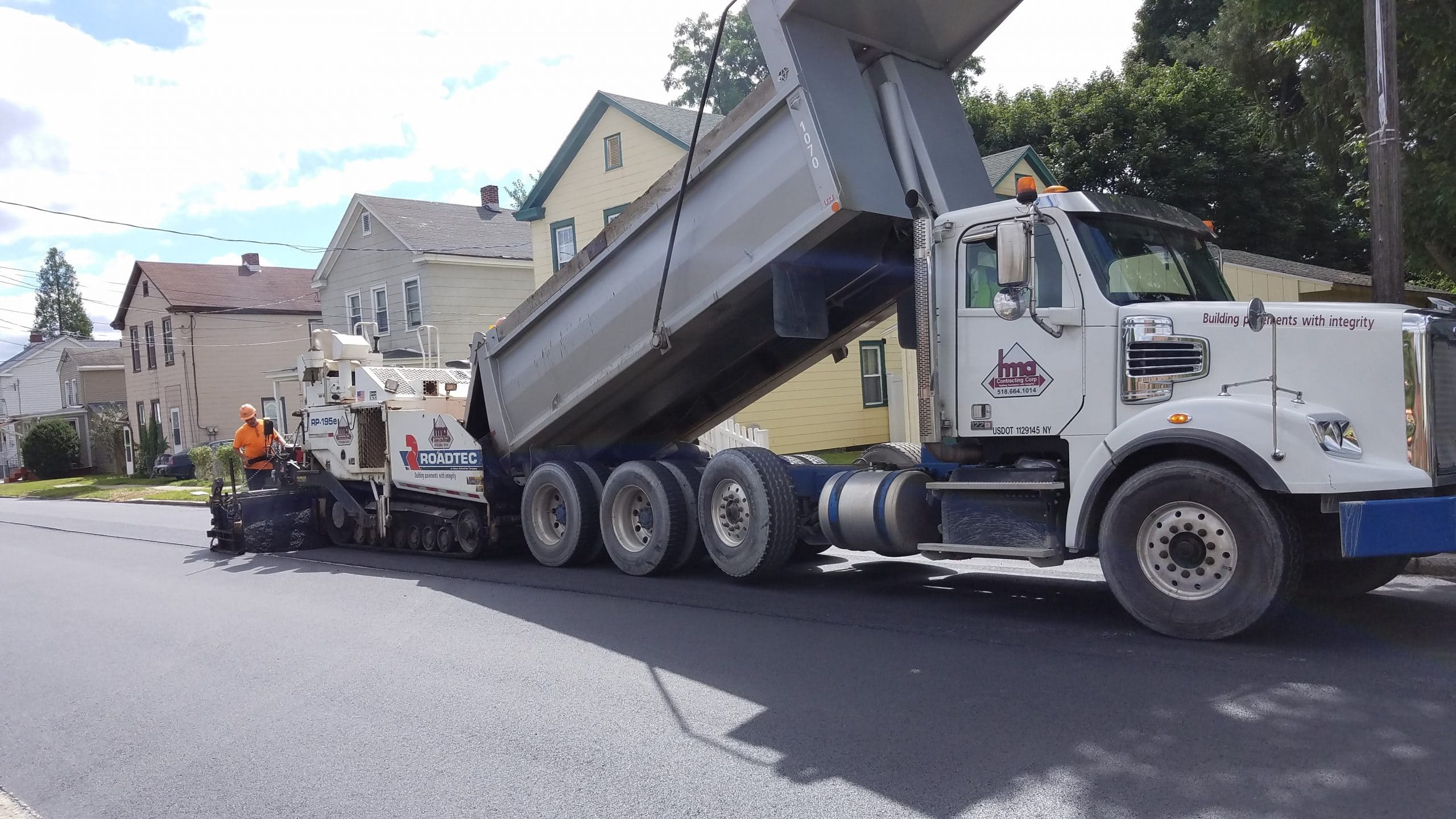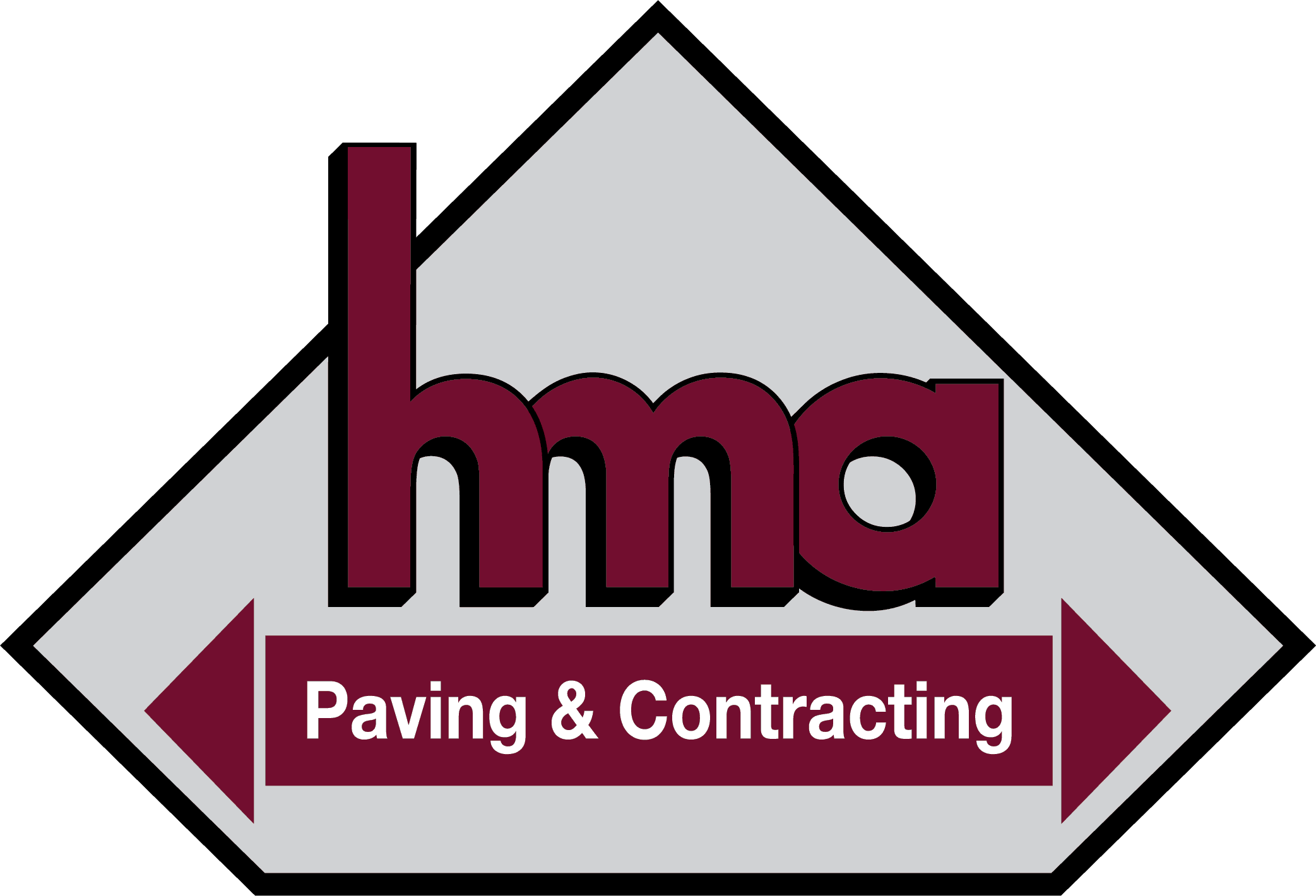
Owning a parking lot or a common roadway comes with a lot of responsibility. As your property ages, you will have to decide when to do asphalt maintenance on your pavement. The longer you go before doing some type of upkeep or paving work, the more money you will have to pay to have your parking lot or roadway redone down the line.
As your parking lot ages, you should perform routine parking lot maintenance, such as filling any cracks that show up with hot joint crack filler. The best application for this product is to make sure that you get the cracks routed and cleaned out first. This will enable the crack filler material to be placed in the crack.
Without the routing process, the crack fill material will only act like a band-aid. Snowplows and cars will pull off the crack filler material due to the material not being firmly adhered to the crack.
The conditions your parking lot or roadway was paved under, the climate you live in, and the amount of asphalt maintenance you choose to do while owning your parking lot or roadway all determine how much work will have to be completed to bring your pavement back up to your desired look and functionality.
There are multiple scopes of work that can be performed to complete the required asphalt maintenance, each at a different price point. The price difference could be substantial based the needs of your pavement.
Option One: Pavement Overlay
A basic pavement overlay is the cheapest roadway or parking lot maintenance option. This method should only be chosen if there are not a lot of existing failed areas, along with minimal cracks to take care of before the overlay.
The scope of work for this option is to mill all necessary keyways at existing drop curbs and adjacent areas that tie into you parking lot or roadway. Then a tack coat would have to be placed. The tack coat gets sprayed at a distribution rate of 0.07 gallons per square yard.
After the tack coat is placed, a compacted 1.5-inch course of type 6 asphalt should be paved. Along with the top course, we’ll need to shim any low areas with blacktop to ensure the proper plane to pave on.
This asphalt maintenance option, depending on the condition of the pavement, will last about 10 years. It would also have the least impact on your business or on your tenant’s business or residence. Please consider that this option will not take the curb reveals into account.
Option Two: Spot Repairs
The second choice would be to cut out and repair isolated deteriorated areas before the paving course. The repairs would consist of saw cutting and removing the bad areas. The edges of the patches would be tack coated before paving in the excavated areas. The patches would then be paved with type 3 dense binder mix asphalt concrete. The depth would depend on how far down the excavation had to be done.
The rest of this option would follow the same scope as the first option. Depending on the number of patches that are repaired, the repairs could increase the cost to 25-35% more than option one. This is based on repairing about 10% of the pavement surface.
With these repairs being done, your pavement will last about 20% longer than option number one. This option would add an additional day to the schedule to make the repairs.
Option Three: Asphalt Milling
The third asphalt maintenance option is to mill off all the existing pavement down 0.5-2 inches from the existing grade. The asphalt milling machine mills at 6 to 7 feet wide, so traffic can usually be maintained while the milling option is going on. The milled material is loaded in a dump truck and is delivered back to a blacktop plant.
Many blacktop plants reuse the material by mixing it back into the new paving mix. After the milling work is done, it is safe for cars to drive on the milled surface. The areas that the big milling machine can’t get to will have to be touched up by using a skid steer with a small milling head attached to it.
After this work is done, the pavement will have to be cleaned thoroughly. Before the paving is done, a tack coat will have to be furnished and installed at a distribution rate of 0.07 gallons per square yard.
Some shimming of the existing surface will have to be done to cover some rough spots. After the surface is shimmed and tack coated, the final 1.5- inch course of type 6 will be paved. This option will cost about 40% more than option number one.
With this option, the existing curb reveals can be addressed better than with options one or two. This option would give you a pavement life of about 15 years.
Option Four: Blacktop Removal
Option four is to remove the blacktop down to the existing sub-base. This can be done by milling it down with a milling machine, the same machine that is used above in option three, or back excavating the blacktop out with an excavator and a bulldozer.
With this option, it is especially important that the existing sub-base gets proof rolled to ensure that it is sufficient to run on with heavy paving trucks. After proof rolling, it may be determined that some spot areas may need to be replaced.
The next item that would need to be completed is to fine grade and compact the existing sub-base. The paving specification would then be to pave with 2.5 inches of type 3 dense binder and a 1.5-inch course of type 6 top. The pavement would then be striped.
This option is a good one if you find that the existing sub-base is in good shape. The cost for this option would be about 2.5 times that of option number one and about twice the cost of option two and three. With this option, your parking lot should last for 20 years.
Option Five: Complete Removal
The last-resort option for asphalt maintenance would be to excavate out all of the sub-base and all of the paving. The scope of the project is the same as option four above, but the cost of the removal and replacement of the sub-base would need to be added. A good thickness of sub-base is 12 inches.
After the existing sub-base is removed, a 12-inch course of type 2 crusher run sub-base would be placed and compacted over a soil stabilization fabric. You would then follow option four above. The cost of this option is about 30-40% percent higher than option four.
Each option comes with its own concerns about traffic control and the time your tenants or residents will have to stay off the new paving. Having the proper traffic control and barricades is essential to keep pedestrians safe.
Call Us Today!
If you’re interested in asphalt maintenance, HMA Paving & Contracting is here to help! We’re happy to answer any questions you may have about what it takes to maintain your parking lot or roadway over time. Fill out our contact form or call (518) 664-1014 to get in touch today!
